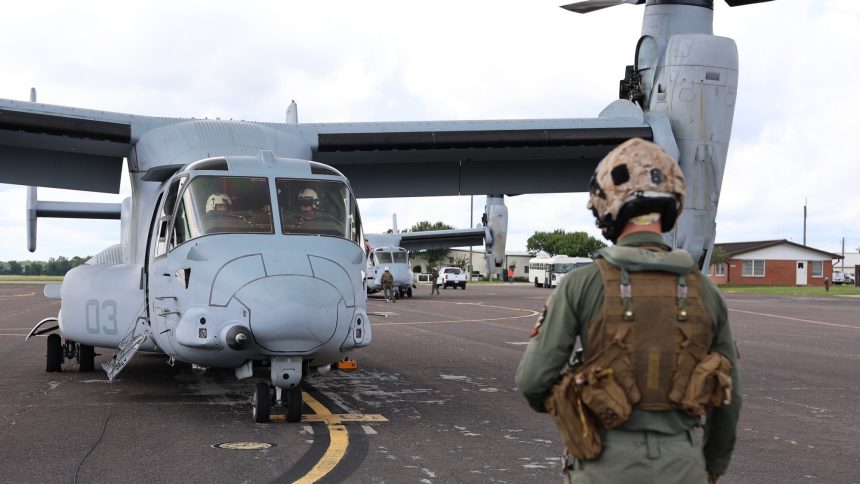U.S. Army aviators are gaining hands-on experience with tiltrotor technology through familiarization flights in the MV-22 Osprey of the U.S. Marine Corps.
In order to better prepare for the introduction of the MV-75 Future Long Range Assault Aircraft (FLRAA), U.S. Army aviators are gaining hands-on experience with tiltrotor technology through familiarization flights in the MV-22 Osprey of the U.S. Marine Corps. The flights took place at Fort Rucker, Alabama, on tiltrotors provided by Marine Medium Tiltrotor Training Squadron 204 (VMMT-204).
This initiative is part of the Army’s effort to build a foundational knowledge base for the transition to the new MV-75, informing future training and doctrine development. The FLRAA program reached the milestone B in June 2024, transitioning to the engineering and manufacturing development phase, and the virtual prototypes were accepted by the Army in June 2025.
“Through the Army’s FLRAA program, we’ve officially passed milestone B and selected tiltrotor as the next step,” said Chief Warrant Officer 3 Joshua Baker, training developer in the Directorate of Training and Doctrine, DOTD, at Fort Rucker. “This familiarization is about more than flying. It’s about understanding the entire ecosystem that comes with tiltrotor operations.”
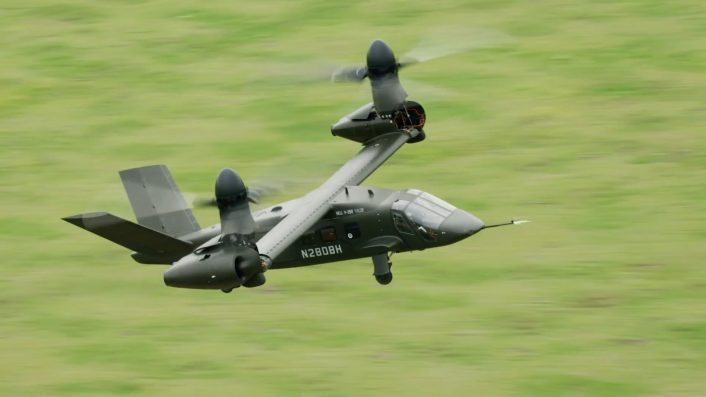
Army-Marines cooperation
As part of this cooperation between the Army and the Marines, Chief Warrant Officer 3 Joshua Baker and Chief Warrant Officer 5 Brian McKnight, both training developers in DOTD, flew the MV-22 alongside U.S. Marine Corps Capt. John Albertini, a Naval Air Training and Operations Procedures Standardization evaluator. The Army said this flight provided a critical firsthand look at tiltrotor flight characteristics, but it was only the culmination of a more extensive effort.
In fact, prior to the flight, the service mentioned that Baker, McKnight and other Army aviators recently completed ground school and 60 hours of simulation training with VMMT-204 at Marine Corps Air Station New River. Additionally, the Army’s team also audited the unit’s maintenance course, with maintenance training developers in DOTD getting together with VMMT-204 maintenance instructors to study the sustainment and technical demands of tiltrotor aircraft, and assess new skill sets required for composite structures, fiber optics, and other advanced systems which are new to the Army.
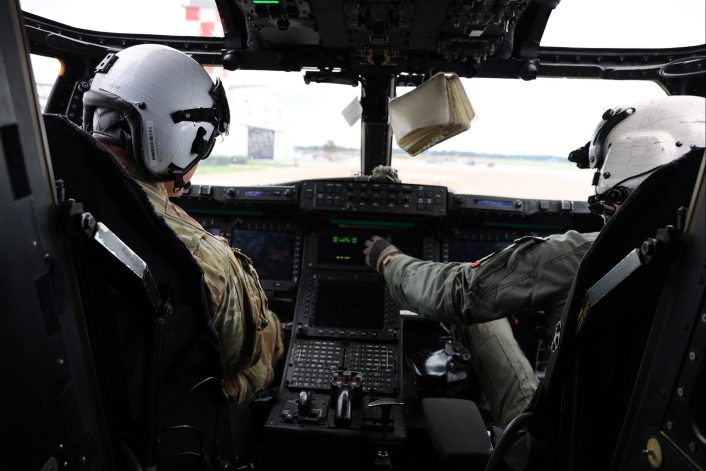
“This is a completely new skill set for Army Aviation,” Baker explained in the press release. “We’re learning from the Marines, who’ve been flying tiltrotors for years. There’s no reason to start from scratch when three other services have already defined this thing.”
However, it appears that the MV-22 flights might not have been planned initially, as Baker defined them a “target of opportunity.” In fact, according to the press release, these became possible when VMMT-204 personnel traveled to Alabama for an unrelated event with the Air Force’s 23rd Flight Training Squadron, which is also stationed at Fort Rucker together with the Army’s Aviation Center of Excellence.
The cooperation will continue in future, as the Army plans to bring VMMT-204 personnel back periodically to support virtual prototype updates and share operational insights. “We want them to show us their tactics and help us develop our own advanced-level procedures,” Baker said. “Again, there’s no reason to reinvent the wheel.”
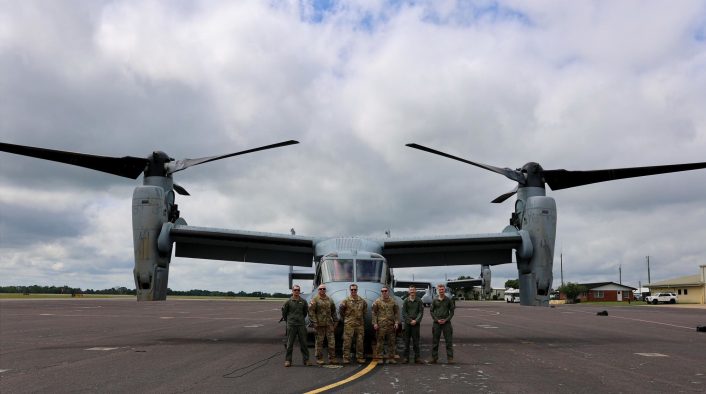
The MV-75
The Bell V-280 Valor won the competition for the Army’s new helicopter in late 2022, with FLRAA becoming the only Future Vertical Lift (FVL) platform to move into the EMD phase. The U.S. Army has officially designated MV-75 as the Mission Design Series (MDS) for the new aircraft in May 2025, with the number “75” commemorating the Army’s founding year, 1775, while the MDS indicates “M” stands for multi-mission and “V” stands for vertical takeoff.
The Army initiated the FLRAA program in 2019 as part of its Future Vertical Lift initiative to replace a portion of its assault and utility helicopter fleet. The new platform will expand the depth of the battlefield by extending the reach of air assault missions and enabling ground forces to converge through decentralized operations at extended distances.
The service, in fact, required FLRAA to be capable, among all things, of traveling roughly 2,440 nautical miles without refueling, in addition to being agile enough to safely maneuver troops into dangerous hot spots.
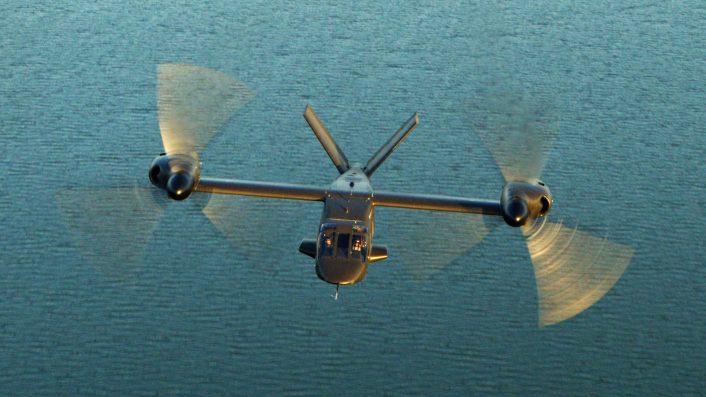
The Army also disclosed that, by implementing reform initiatives designed to streamline the acquisition process, this contract will deliver virtual prototypes that can be updated quickly and affordably. These virtual prototypes will directly support design, integration, training and developmental test activities, ahead of the delivery of the prototypes in the final configuration.
The first virtual prototype was accepted by the U.S. Army on June 24, 2025, at the Redstone Arsenal, Alabama, while the second on was delivered later that month to Fort Rucker’s Aviation Center of Excellence. These virtual prototypes are advanced simulators based on a digital twin of the FLRAA weapon system, explained the service.
Their role will be to act as learning devices to inform early design improvements, software development, verification, integration and test, while also helping to identify early tactics, techniques and procedures through experimentation. These will be used in conjunction with special user evaluations, such the one held in May 2025, where soldiers assess different parts of the weapon system to give real-world operational context for the aircraft’s design, bridging the gap between engineering and battlefield applications.
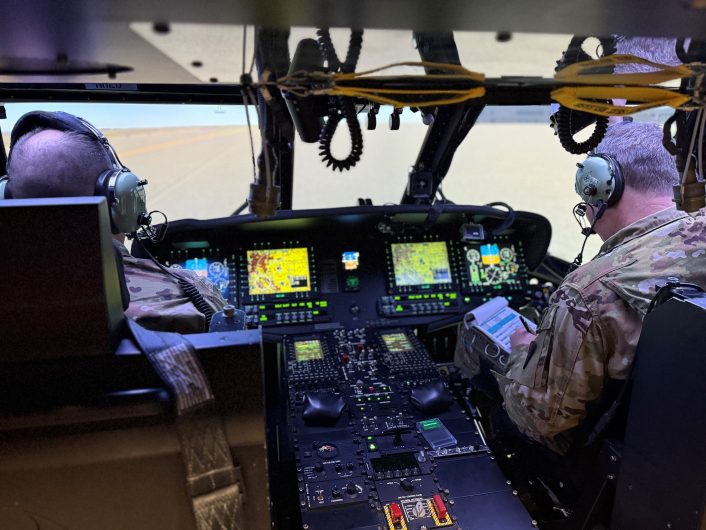
“We’ve got test pilots flying the virtual prototype with local Fort Rucker pilots right now,” Baker said. “This helps inform tactics development and task analysis. DOTD is the proponent for doctrine, and we’ll be responsible for taking what Bell and others give us and shaping it into Army tasks and training.”
The latest plans foresee the first flight of the physical prototype in 2026, with the first deliveries of operational MV-75s in 2030.

